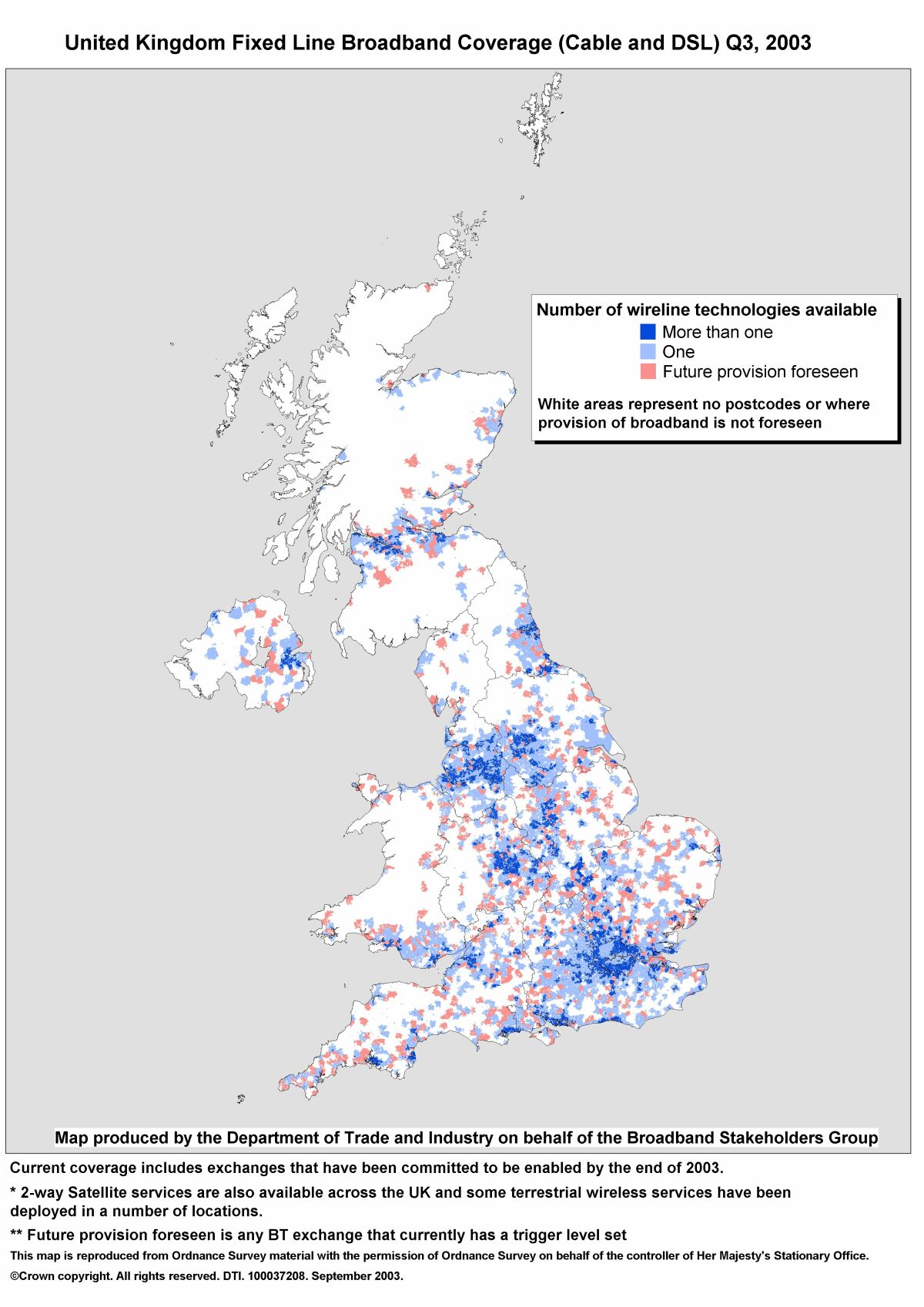The Broadband Stakeholder Group’s third annual report provides a definitive look at Broadband Britain at the beginning of 2004 highlighting significant progress made to date but warning there is no room for complacency as the challenge of delivering next generation broadband comes into view.
The Broadband Stakeholder Group (BSG), the government’s key advisory group on broadband, today unveils its eagerly awaited third annual report on the development of Broadband Britain. The report provides the definitive view of progress made in 2003 before warning that there is much more to do to enable a broadband Britain.
The BSG report recommends that government, in consultation with stakeholders should set a new target for the next phase of the UK’s broadband journey and the deployment of next generation broadband services, with clear milestones to be reached before 2010.
Antony Walker, CEO, BSG argues:“It’s clear that broadband has taken off – people are seeing real benefits every day. The real challenge is to meet the growing expectations of both consumers and businesses as they adopt, adapt and absorb broadband into their daily lives and to make sure that we build a thriving and sustainable broadband market in the UK – this needs a new target for the next phase beyond 2005.???
The government’s 2005 target has been successful in stimulating action by both the government and private sector stakeholders. However, the UK can’t be complacent in its bid to keep up with international competitors. By setting new targets the government can re-focus on the next objectives and build on the good work done to date.
The BSG lists five critical challenges for the next phase of the development of broadband Britain.
The BSG’s Five Broadband Challenges
- Create, deliver and exploit value – moving businesses and consumers through the phases of adopting, adapting and absorbing as quickly as possible
- Building a thriving and competitive content services and applications sector in the UK – exploiting and optimising the potential of UK talent for creative media in a pro-competitive way
- Encourage investment in ‘next generation’ broadband infrastructures and services ahead of the demand curve – Government has a critical role in creating the right investment climate for technological development
- Developing new broadband ‘environments’ – moving towards a more integrated approach to fixed and mobile communications services with the development of interoperability between platforms, services and devices
- Bridge digital divides – breaking down barriers to universal adoption and use is critical
The report positions broadband as a highly disruptive force that is rapidly changing the communications landscape as well as many other related sectors. The success of stakeholder activity over the past three years has hastened the onset of valuable broadband services and is now creating new opportunities. However, there are also significant threats in a broadband enabled global economy where lower skilled service jobs are easily exportable off shore. The BSG warns that as Britain moves into the next phase of the broadband journey, a huge step change is required by all stakeholders in the prioritisation given to building a world leading broadband-based online economy.
Keith Todd, Chairman of the BSG said, “we’ve made very good progress – but there is much more to be done by all stakeholders to accelerate not just the adoption of broadband but also the exploitation of its full benefits by consumers, businesses and the public sector.???
Stephen Timms, Minister of State for Ecommerce welcomed the BSG report and the new recommendations for further action, stating: “excellent progress has been made in the last 12 months with a significant increase in coverage, choice and take up of broadband.
“However the BSG is right to say that there remains much to be done. The widespread adoption and use of broadband is key to further improving UK business productivity and competitiveness.
“The BSG has been very effective in harnessing and communicating the views of the stakeholder community and I look forward to continuing the dialogue with all stakeholders as we move the next stage in the development of broadband Britain.???


